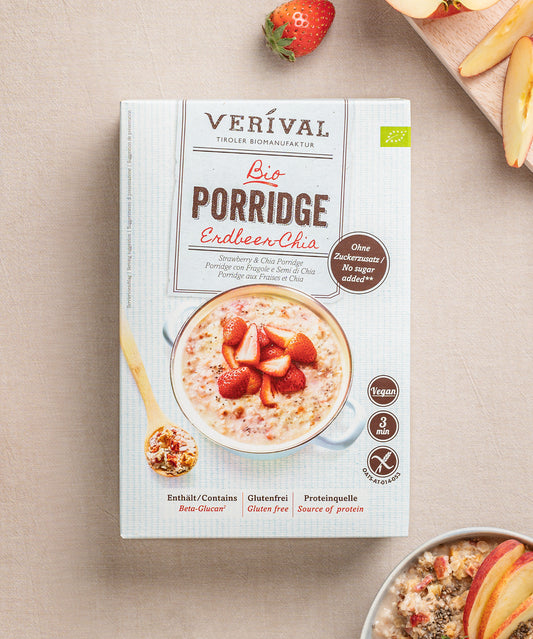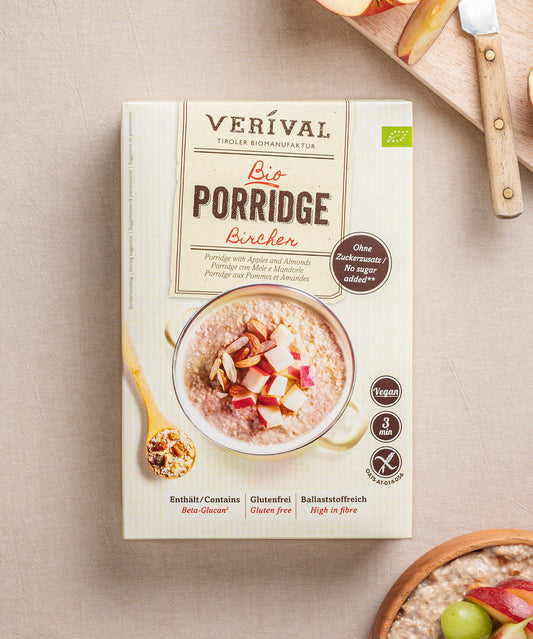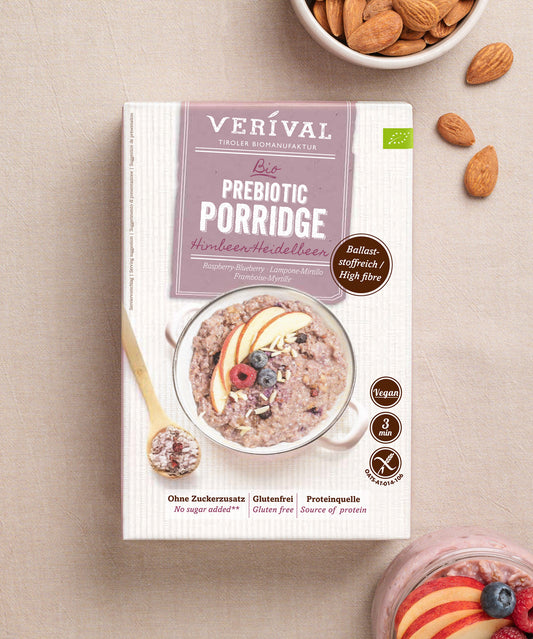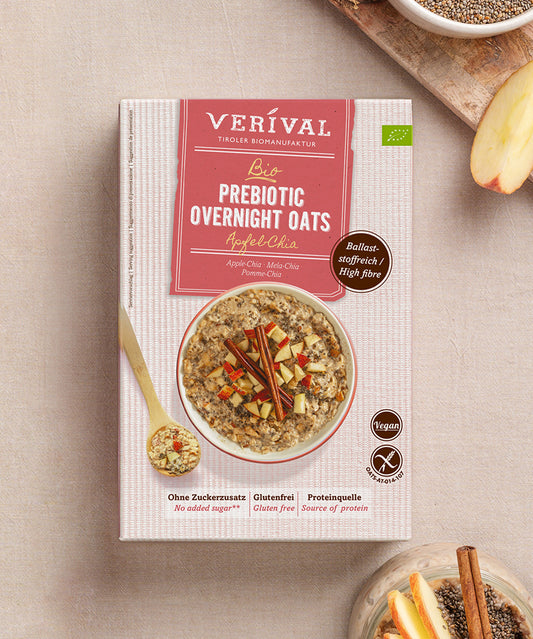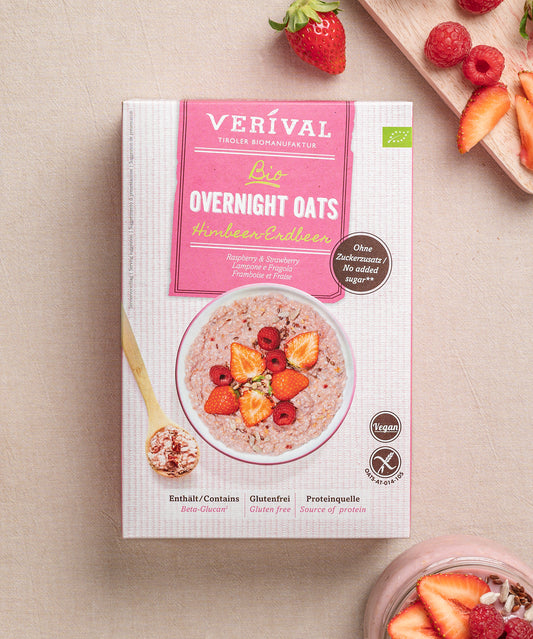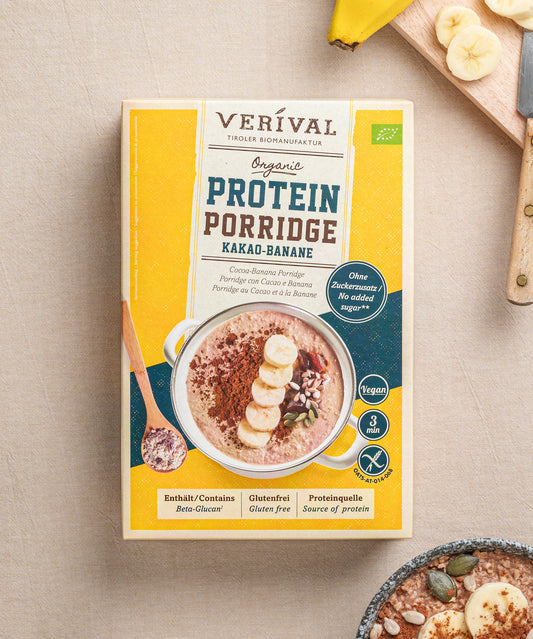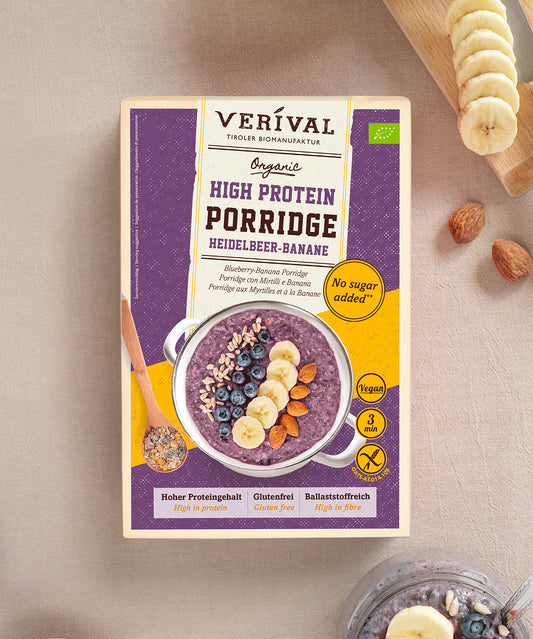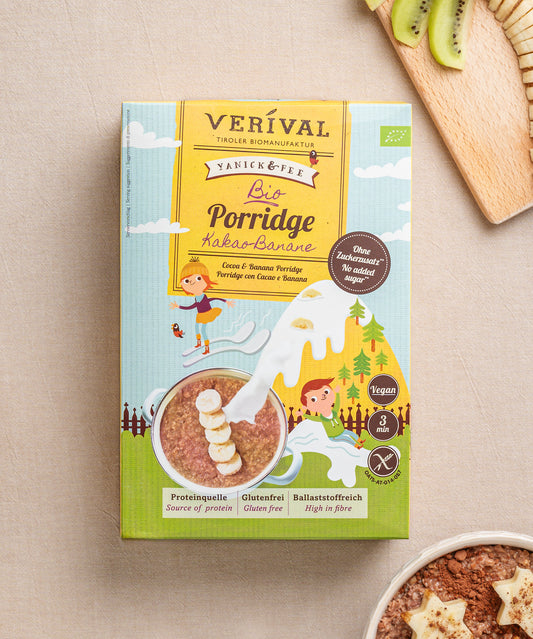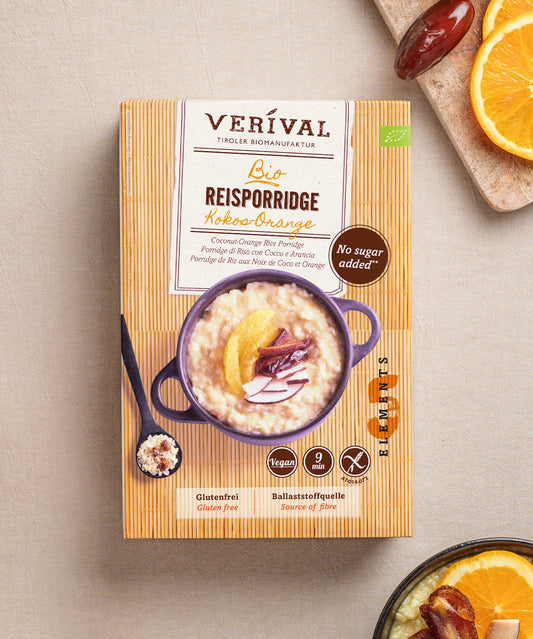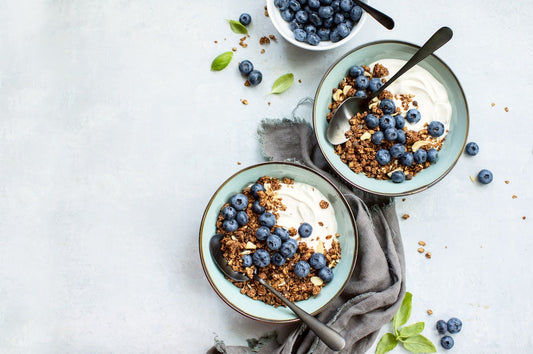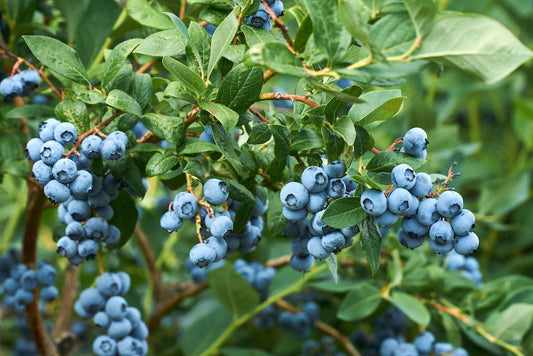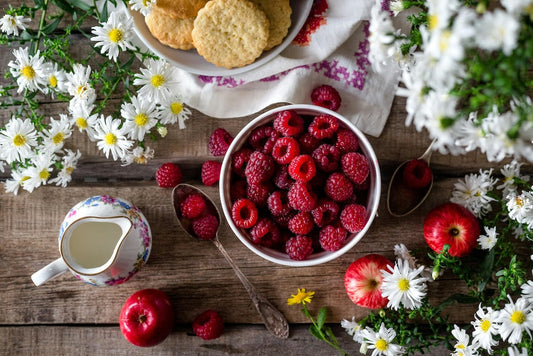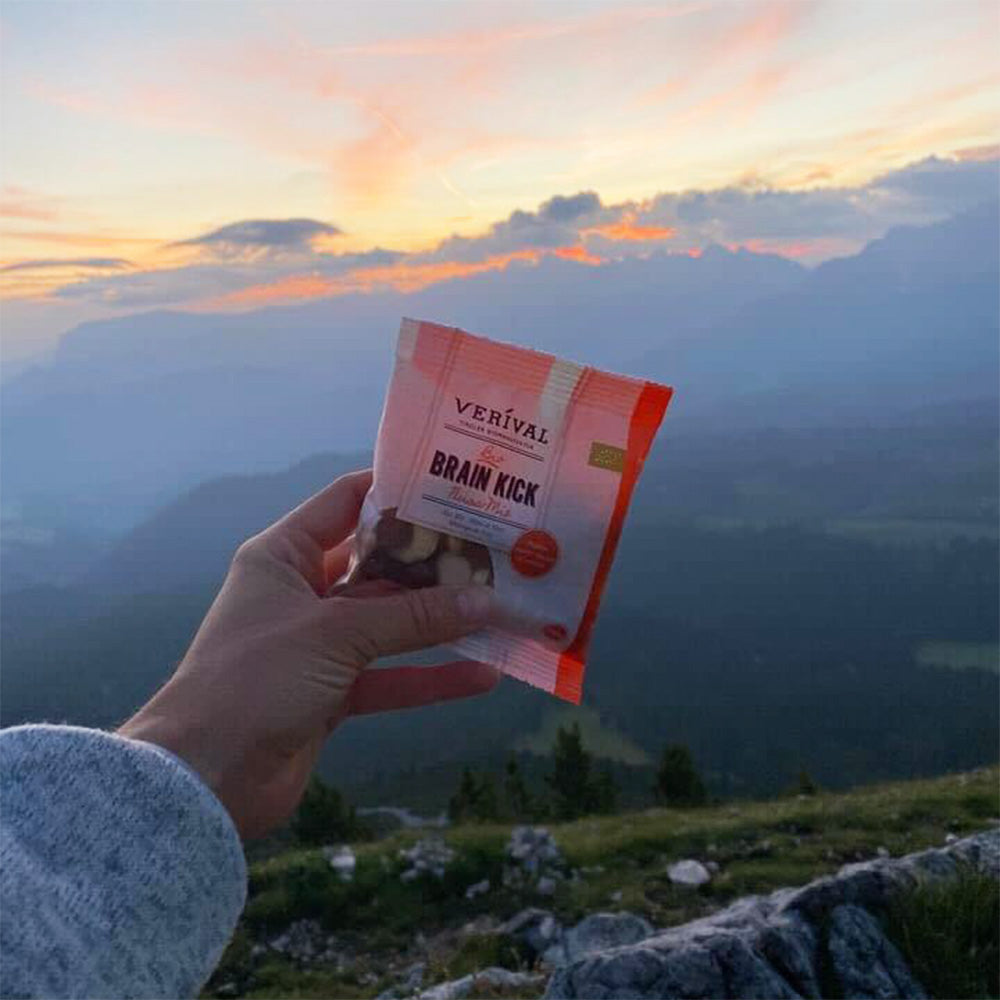The banana is a fruit that people of all ages around the world love. Perhaps you are already a banana fan. If not, you will be after reading this article. Bananas are not only a delicious snack, but also an important ingredient in many dishes. They represent a diverse world of botanical wonders, different varieties and versatile uses.
In this article, we will delve into the fascinating world of bananas with you and you will learn more about their origin and the diversity they have to offer. Join us on a journey through the world of bananas, from plant to fruit, and discover why bananas occupy a special place in global nutrition and culture. Welcome to the wonderful world of bananas!
Banana porridge – discover it now!
History of the banana
The history of the banana is a fascinating journey that spans thousands of years and various continents. Originally cultivated in Asia, where it was one of the first fruits to be grown, the banana has a rich and varied history.
In Asia, particularly in regions such as India and Southeast Asia, it was valued not only as a food but also for its many uses in traditional medicine and culture.
It was only in the early Middle Ages that Arab traders finally brought the banana to Africa and Europe, where it was considered an exotic and precious fruit. Its popularity and spread in Europe only began in modern times, when improved transport and global trade networks enabled its import in larger quantities.
In its countries of origin in Asia, the banana underwent continuous development and adaptation. Selective breeding has produced various types of bananas that differ in size, taste and colour. This diversity is reflected today in the numerous types of bananas that are grown and consumed worldwide.
This reflects the deep roots of the banana in Asian cultures as well as its influence on European cuisine and global trade.
Countries of origin and economic importance of the banana
The main banana-producing countries are located in tropical regions. The leading producing countries include Colombia and the Philippines, where extensive banana plantations not only play an important economic role but also create numerous jobs.
Banana production is of great economic importance for these countries, as it makes a significant contribution to the gross domestic product and is a central component of exports. In terms of exports, Ecuador is at the top of the list, followed by the Philippines, Guatemala, Costa Rica and Colombia. The global demand for bananas boosts the economies of these countries, but it also presents challenges, particularly with regard to sustainable methods of growing the plants and fair working conditions.
The banana plant is four to six metres high and is grown in monocultures. Monocultures have the consequence that pests of all kinds can spread more quickly. Fungal diseases in particular, such as so-called Panama disease, can threaten the crops. Since conventionally grown bananas are among the fruits most contaminated with pesticides, you should always choose organic bananas if possible.
The banana plant
The banana plant, also known as Musaceae, is unique in nature. Surprisingly, the banana fruit is botanically classified as a berry, although it does not have the typical berry characteristics. The banana family includes a wide variety of species.
Of the approximately 400 varieties of dessert bananas or fruit bananas that exist, we mainly offer the Cavendish variety, which is known for its uniform size, sweet taste and good shelf life. However, there are many other varieties besides Cavendish, such as the cooking banana and smaller, sweeter varieties that are particularly popular in their countries of origin. This diversity illustrates the cultural and culinary importance of the banana.
In Southeast Asian cuisine, banana leaves are often used as serving trays or flavour-rich baking and grilling casings.
The banana – a popular food
The banana has become a globally popular food that plays a central role in many cultures and cuisines. The development of the banana from a local speciality to a globally consumed food is remarkable and is reflected in the variety of ways it is used.
Not only its sweet, appealing taste, but also its considerable nutritional value make the banana a popular choice. The yellow fruit has become a staple food worldwide. You can enjoy it both raw and in processed form.
How many calories are in a banana?
The calories in bananas are manageable. An average-sized, medium-ripe banana contains about 90 to 100 calories, which is relatively low compared to other snacks. Compared to a handful of nuts or a chocolate bar, bananas offer you fewer calories but also important nutrients.
Calorie calculator – Calculate your calorie requirement now!
Bananas and their nutritional values
Bananas are not only popular because of their great taste, but also because of their high nutritional value. Bananas are an excellent source of vitamin C and potassium, two essential nutrients that play an important role in your health.
Vitamin C is known for its antioxidant properties and strengthens your immune system, while potassium is crucial for maintaining blood pressure and heart health.
In addition, bananas contain valuable fibre and B vitamins, which contribute to digestive health and energy production.
Why are bananas curved?
Have you often wondered about this? Here is the explanation: the characteristic curvature of bananas is caused by a fascinating botanical phenomenon.
Interestingly, bananas originally grow upwards, against gravity, and only bend in the course of their development. During the growth process, the bananas strive away from the dark, shady ground and turn towards the light, a process known as negative geotropy.
The pseudostem of the banana plant plays a crucial role in this process. It supports the fruit and enables them to effectively bend towards the light. This process gives the banana its typical shape.
The individual fruits grow to a length of about 10 (baby bananas) to 35 centimetres, are elongated, curved and slightly angular in cross-section.
How healthy are bananas really?
Bananas are considered to be one of the healthiest foods around and are much more than just a quick snack. They offer a wealth of health benefits as they are rich in important nutrients such as fibre, vitamins and various antioxidants. The fructose contained in bananas provides you with natural and quick energy, which is also particularly popular with athletes.
Fibre can help to promote good digestion and regulate blood sugar levels. These properties make bananas a valuable part of a health-conscious diet that can support both your physical and mental well-being.
Are bananas good for your gut?
Yes, bananas are good for your gut. In fact, bananas are an excellent choice for promoting your bowel health. They are high in fibre, which aids digestion and contributes to a healthy intestinal environment.
These fibres gently regulate bowel movements, which can be particularly beneficial for those suffering from constipation. They also promote the growth of beneficial gut bacteria, which are crucial for a healthy intestinal flora.
How much fibre does a banana contain?
An average medium-sized banana contains about 3 to 4 grams of fibre, making it a good source of these important nutrients.
What is particularly interesting is that in green, unripe bananas, the fibre content mainly consists of resistant starch, which acts like soluble fibre in the intestines. As they ripen, these resistant starches convert into sugars, which is why ripe bananas taste sweeter, but they are still a good source of fibre.
This makes bananas a versatile fruit that offers health benefits in both unripe and ripe form.
Bananas and their fibre – read more!
Are bananas high in carbohydrates?
Bananas are indeed high in carbohydrates, which makes them an effective source of energy. A medium-sized banana contains about 27 grams of carbohydrates, which are mainly composed of starch and fructose.
Compared to other types of fruit, bananas have a slightly higher carbohydrate content, which makes them a quick and convenient source of energy, especially if you are active in sports and as a snack between meals.
An important aspect of the carbohydrate content in bananas is their influence on the glycemic index (GI). The GI of a food indicates how quickly the sugar it contains enters your bloodstream and affects your blood sugar level.
Ripe bananas have a higher GI than unripe, green bananas. This means that the sugars in ripe bananas enter your bloodstream faster, which can result in a rapid increase in energy.
Green bananas, on the other hand, have a lower GI and contain resistant starch, which is digested more slowly and thus provides a slower and more even increase in energy.
In summary, bananas are a nutrient-dense fruit with a high content of easily digestible carbohydrates. They are an excellent source of quick energy and can help you meet your energy needs before or after physical activity.
If you have diabetes and need to watch your glycemic index, you should keep a close eye on your intake of ripe bananas.
2 types of carbohydrates – find out more!
How many calories are in a banana?
Bananas are known for their moderate calorie content, which makes them a popular part of many diets. A medium-sized banana contains an average of about 100 calories. Compared to other foods, especially high-calorie snacks, bananas offer a healthier alternative.
They not only give you energy, but also important nutrients and help you feel full for longer. Bananas can be a useful addition to a weight control or diet as long as they are part of a balanced diet.
Can bananas help you lose weight?
Bananas can be a valuable ally if you want to lose weight. With their natural sugar content and fibre, they help to prevent food cravings. So yes, bananas can help you lose weight.
Bananas are also rich in nutrients and offer a healthy alternative to sugary snacks. They are easy to incorporate into diet plans. However, it is important that you enjoy them as part of a calorie-controlled diet, as bananas, despite their health benefits, also contain natural sugars.
How can you lose weight successfully?
When combined with a balanced diet and regular exercise, bananas can play a useful role in your healthy eating and weight management goals.
Tip – how to use ripe bananas
Ripe bananas are a versatile ingredient in the kitchen and lend themselves to many creative uses. Here are some tips and recipe ideas for you:
Banana bread: One of the most popular recipes for overripe bananas is banana bread. The ripe fruits provide natural sweetness and moisture. Mix mashed bananas with flour, baking powder, a pinch of salt and your favourite ingredients such as nuts or chocolate chips for a tasty variation.
Smoothies: Overripe bananas are perfect for smoothies. They give the drink a natural sweetness and a creamy consistency. Combine them with other fruits, yoghurt or milk alternatives and some ice for a refreshing and nutritious drink.
Banana milk: An easy and healthy way to use ripe bananas is to make banana milk. Simply blend the bananas with milk or a plant-based milk alternative. You can add vanilla extract or cinnamon for extra sweetness and flavour.
These tips will help you to use ripe bananas sensibly and deliciously, while also avoiding waste. Whether in bread, as a smoothie, banana split or in the form of milk – ripe bananas are a delicious ingredient that no kitchen should be without.
Which is healthier, a banana or an apple?
When it comes to the question of whether a banana or an apple is healthier, it depends on your personal needs. Apples contain fewer calories and sugars than bananas and are high in fibre, particularly pectin, which aids digestion. Bananas, on the other hand, are a good source of vitamin B6 and vitamin A, are high in potassium and can give you quick energy.
In a comparison of fruits, the two complement each other perfectly. While apples are a good choice for a calorie-conscious diet, bananas are particularly suitable for athletes or when you have a higher energy requirement. It is recommended that you include both bananas and apples in your diet to benefit from their different health advantages.
Discover the Verival products with banana flavouring
Conclusion
The banana is a real all-rounder in the world of fruit. Not only is it handy for when you're on the go, but it's also full of nutrients that are good for your body. Its natural sweetness and high vitamin and mineral content make it an ideal snack to get you through the day. Whether you're doing sports, need a quick source of energy or just want to have a banana as part of your breakfast, it's always a good choice.
And the best part: there are many ways to incorporate bananas into your diet. In short, bananas are a small powerhouse of nature that fits in any pocket. So, next time you're at the supermarket, don't forget to add some bananas to your cart. Your body will thank you for it!
Frequently asked questions
How healthy are bananas for your body?
Bananas are extremely healthy as they are rich in essential nutrients such as vitamin B6, vitamin C and potassium. They also contain tryptophan, an amino acid that contributes to serotonin production and promotes your overall well-being. They are also a good source of fibre, which aids your digestion and contributes to gut health.
What are the special features of bananas?
Bananas are characterised by their diversity, with dessert bananas and cooking bananas (also known as plantains) being the best-known types. Dessert bananas are sweet and are usually eaten raw, while cooking bananas are sturdier and are often cooked or fried before being eaten. In addition, bananas are very popular because of their high carbohydrate content and the fact that they provide a quick source of energy. Particular features are, above all, the different stages of ripeness of a banana and the associated changes in terms of their nutritional value. The growth of the fruit, against the force of gravity, is also particularly interesting.
Where does the name banana come from?
The name ‘banana’ is derived from Arabic, where ‘banan’ means finger. This term reflects the long, slender shape of the fruit. The banana is scientifically referred to as ‘Musa’, which indicates its botanical classification as part of the Musaceae family.
What is the correct name of the banana?
Botanically correct, the banana is referred to as ‘Musa’, with different species and varieties, such as Musa paradisiaca for the cooking banana and Musa sapientum for the dessert banana. This distinction is important because the different types of bananas have different culinary uses and nutritional values.
Can bananas cause allergies?
Although bananas are considered safe and healthy, they can, in rare cases, cause allergies. You should enjoy bananas with caution if you have histamine intolerance, because they trigger the release of histamine in the body.
What role do bananas play in a vegan diet?
Bananas are very popular in vegan cuisine because they are versatile – as a sweet snack, in smoothies or as an egg substitute in baking recipes. Their natural sweetness and creamy consistency make them ideal for a variety of dishes.
How to store bananas?
You should store bananas at room temperature to avoid accelerating the ripening process unnecessarily. If you keep them in the refrigerator, the peel may darken, but the flesh will remain unchanged. You should store bananas separately from other fruits to avoid overripening.
Is there a difference between green and ripe bananas in terms of nutritional value?
Yes, there is a significant difference between green and ripe bananas in terms of their nutritional profile. Green bananas are high in resistant starch, a type of carbohydrate that acts similarly to fibre in your body. This resistant starch is digested more slowly, resulting in a smaller and slower increase in your blood sugar levels. By contrast, ripe bananas have a higher sugar content, which makes them sweeter and gives them a softer, more easily digestible consistency. The ripening process causes the resistant starch to be converted into sugars, changing the nutritional composition. While ripe bananas give you quick energy, green bananas benefit your gut health and can help keep your blood sugar levels more stable.


